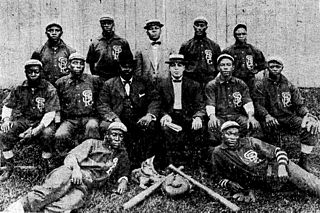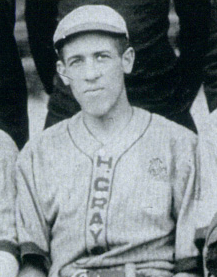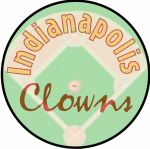The Negro leagues were United States professional baseball leagues comprising teams of African Americans. The term may be used broadly to include professional black teams outside the leagues and it may be used narrowly for the seven relatively successful leagues beginning in 1920 that are sometimes termed "Negro Major Leagues".

The Kansas City Monarchs were the longest-running franchise in the history of baseball's Negro leagues. Operating in Kansas City, Missouri, and owned by J. L. Wilkinson, they were charter members of the Negro National League from 1920 to 1930. J. L. Wilkinson was the first white owner at the time of the establishment of the team. In 1930, the Monarchs became the first professional baseball team to use a portable lighting system which was transported from game to game in trucks to play games at night, five years before any MLB team did. The Monarchs won ten league championships before integration, and triumphed in the first Negro League World Series in 1924. The Monarchs had only one season in which they did not have a winning record. The team produced more major league players than any other Negro league franchise. It was disbanded in 1965.
The color line, also known as the color barrier, in American baseball excluded players of black African descent from Major League Baseball and its affiliated Minor Leagues until 1947. Racial segregation in professional baseball was sometimes called a gentlemen's agreement, meaning a tacit understanding, as there was no written policy at the highest level of organized baseball, the major leagues. A high minor league's vote in 1887 against allowing new contracts with black players within its league sent a powerful signal that eventually led to the disappearance of blacks from the sport's other minor leagues later that century, including the low minors. After the line was in virtually full effect in the early 20th century, many black baseball clubs were established, especially during the 1920s to 1940s when there were several Negro leagues. During this period, American Indians and native Hawaiians, e.g. Prince Oana, were able to play in the Major Leagues. The color line was broken for good when Jackie Robinson signed with the Brooklyn Dodgers organization for the 1946 season. In 1947, both Robinson in the National League and Larry Doby with the American League's Cleveland Indians appeared in games for their teams.

James Joseph Dykes was an American professional baseball player, coach and manager. He played in Major League Baseball as a third and second baseman from 1918 through 1939, most notably as a member of the Philadelphia Athletics dynasty that won three consecutive American League pennants from 1929 to 1931 and, won the World Series in 1929 and 1930. Dykes played his final six seasons for the Chicago White Sox.
The Chicago American Giants were a Chicago-based Negro league baseball team. From 1910 until the mid-1930s, the American Giants were the most dominant team in black baseball. Owned and managed from 1911 to 1926 by player-manager Andrew "Rube" Foster, they were charter members of Foster's Negro National League. The American Giants won five pennants in that league, along with another pennant in the 1932 Negro Southern League and a second-half championship in Gus Greenlee's Negro National League in 1934.

The St. Paul Colored Gophers was a small club of black baseball players formed in St. Paul, Minnesota, in 1907. They were not a formal Negro league team, as the commonly referred-to "Negro leagues" were not created until 1920. However, like other barnstorming teams of the time, they put considerable pressure on the desegregation of baseball. Historians rarely mention the Colored Gophers in Negro baseball history, and statistics are hard to find.

Richard Hirschfeld Williams was an American left fielder, third baseman, manager, coach and front-office consultant in Major League Baseball. Known especially as a hard-driving, sharp-tongued manager from 1967 to 1969 and from 1971 to 1988, he led teams to three American League pennants, one National League pennant, and two World Series triumphs. He is one of nine managers to win pennants in both major leagues, and joined Bill McKechnie in becoming only the second manager to lead three franchises to the Series. He and Lou Piniella are the only managers in history to lead four teams to seasons of 90 or more wins. Williams was inducted into the National Baseball Hall of Fame in 2008 following his election by the Veterans Committee.

Cumberland Willis "Cum" Posey Jr. was an American baseball player, manager, and team owner in the Negro leagues, as well as a professional basketball player and team owner.

Andrew Lewis Cooper, nicknamed "Lefty", was an American left-handed pitcher in baseball's Negro leagues. He was elected to the Baseball Hall of Fame in 2006. An alumnus of Paul Quinn College, Cooper played nine seasons for the Detroit Stars and ten seasons for the Kansas City Monarchs, and briefly played for the Chicago American Giants. The Texan was 6 feet 2 inches (188 cm) tall and weighed 220 pounds.

The Indianapolis Clowns were a professional baseball team in the Negro American League. Tracing their origins back to the 1930s, the Clowns were the last of the Negro league teams to disband, continuing to play exhibition games into the 1980s. They began play as the independent Ethiopian Clowns, joined the Negro American League as the Cincinnati Clowns and, after a couple of years, relocated to Indianapolis. Hank Aaron was a Clown for a short period, and the Clowns were also one of the first professional baseball teams to hire a female player.
George J. Digby was an American baseball scout and consultant in Major League Baseball.
The Cuban House of David were a traveling Negro league baseball team that played from about 1927 to 1936 featuring players primarily from Cuba.

Olan "Jelly" Taylor was an American baseball first baseman in the Negro leagues. He played for the Cincinnati Tigers in 1934 and 1937 and the Memphis Red Sox from 1938 to 1942, and again in 1946. Taylor was selected to three East-West All-Star Games. He served in the United States Army during World War II.

Cowan "Bubba" Hyde was an American professional outfielder who played mostly in the Negro leagues from the 1920s to the 1950s. In his baseball career, Hyde played with the Memphis Red Sox, Birmingham Black Barons, Indianapolis Athletics, and the Cincinnati Tigers, as well as various teams from other leagues. An exceptional base stealer and above-average contact hitter, albeit with a low walk-ratio, Hyde participated in two East-West All-Star Games.
The Memphis Red Sox were an American Negro league baseball team that was active from 1920 to 1959. Originally named the Barber College Baseball Club, the team was initially owned and operated by Arthur P. Martin, a local Memphis barber. In the late 1920s the Martin brothers, all three Memphis doctors and businessmen, purchased the Red Sox. J. B. Martin, W. S. Martin, and B. B. Martin, would retain control of the club till its dissolution in 1959. The Red Sox played as members, at various times, of the Negro Southern League, Negro National League, and Negro American League. The team was never a titan of the Negro leagues like wealthier teams in northern cities of the United States, but sound management lead to a continuous thirty-nine years of operation, a span that was exceeded by very few other teams. Following integration the team had five players that would eventually make the rosters of Major League Baseball teams and two players that were inducted into the Baseball Hall of Fame.

Wesley "Big Train" Barrow was an American Negro league player and manager in the 1940s who was once regarded as "one of the best developers of Negro talent in the South."
The Laurel Cardinals was the final moniker of the minor league baseball teams based in Laurel, Mississippi. From 1923 to 1929, Laurel teams played exclusively as a member of the Cotton States League, hosting home games at Kamper Park. The Laurel Cardinals were minor league affiliates of the St. Louis Cardinals in 1928 and 1929, having first played as the Laurel "Lumberjacks."
The Gulfport Tarpons were a minor league baseball team based in Gulfport, Mississippi. Gulfport teams played exclusively as members of the Class D level Cotton States League. The Gulfport "Crabs" teams played in the league from 1906 to 1908, with the Tarpons playing from 1926 to 1928. The Tarpons hosted home minor league games at the Fair Grounds.
The Brookhaven Truckers were a minor league baseball team based in Brookhaven, Mississippi. After the Brookhaven team played as a member of the 1904 Class D level Delta League, the Truckers were a member of the Class D level Cotton States League in 1924 and 1925, hosting home games at the High School Park.
The Chehalis Gophers was the first nickname of the minor league baseball teams based in Chehalis, Washington. From 1910 and 1912, Chehalis played exclusively as members of the Class D level Washington State League, winning the 1912 league championship in the final season of the league. Chehalis teams were known by a different nickname each season and hosted home minor league games at Millett Field.
The Negro Leagues, 1869-1960, Leslie A. Heaphy (Jefferson, N.C.:McFarland & Company Inc., 2003. Pp. viii, 375.
Laurel Remembrances, Cleveland Payne(Illustrations by Virginia Garick published in 1996 128 pages.
Laurel Leader-Call newspaper.









